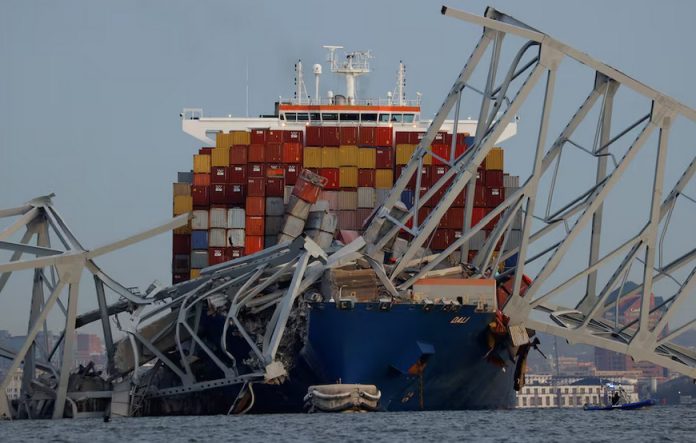Details of how power went out on the container ship Dali moments before it struck and knocked down Francis Scott Key Bridge in Baltimore have been released in the US National Transportation Safety Board’s (NTSB’s) preliminary investigation report.
The ship owner, Grace Ocean, ship manager Synergy Marine, classification society Nippon Kaiji Kyokai (ClassNK) and ship builder HD Hyundai Heavy Industries are among the parties that have consented to be part of the investigation.
On 25 March, about 10 hours before leaving Baltimore, Dali experienced a blackout (loss of electrical power to the high-voltage and low-voltage buses) during in-port maintenance.
While working on the diesel engine exhaust scrubber system for generator no. 2, a crewman mistakenly closed an inline engine exhaust damper, preventing the engine’s cylinder exhaust gases from traveling up its stack and out of the vessel, causing the engine to stall. When the system detected a loss of power, generator no. 3 automatically started and connected to the high-voltage bus. Power was restored when crewmen manually closed the breakers HR2 and LR2.
Generator no. 3 continued to run for a short period, but insufficient fuel pressure caused its speed to decrease, and its breaker (DGR3) opened; a second blackout occurred.
During the recovery, the crew put the TR1 transformer online to feed the low-voltage bus because the TR2 transformer had reportedly been in use for several months.
The first vessel blackout after departure on 26 March occurred when the HR1 and LR1 breakers opened unexpectedly.
The NTSB is still investigating the electrical configuration following the first in-port blackout and potential impacts on the events during the accident voyage.
NTSB’s report also showed there were no issues with the quality of the marine fuels consumed by Dali. The ship used low-sulphur marine gas oil (LSMGO), low-sulphur heavy fuel oil, and heavy fuel oil.
Dali carried an estimated 1.8 million gallons of fuel in dedicated vessel fuel tanks. None of the vessel’s dedicated fuel tanks were damaged. The last time the crew switched fuel was on the evening of 21 March, when they switched to burning LSMGO in all engines upon entering US territorial waters, as required by emission regulatory requirements.
At NTSB’s direction, the owner transferred the samples to an independent laboratory. The test results did not identify any concerns related to the quality of the fuel.
Martina Li
Asia Correspondent







